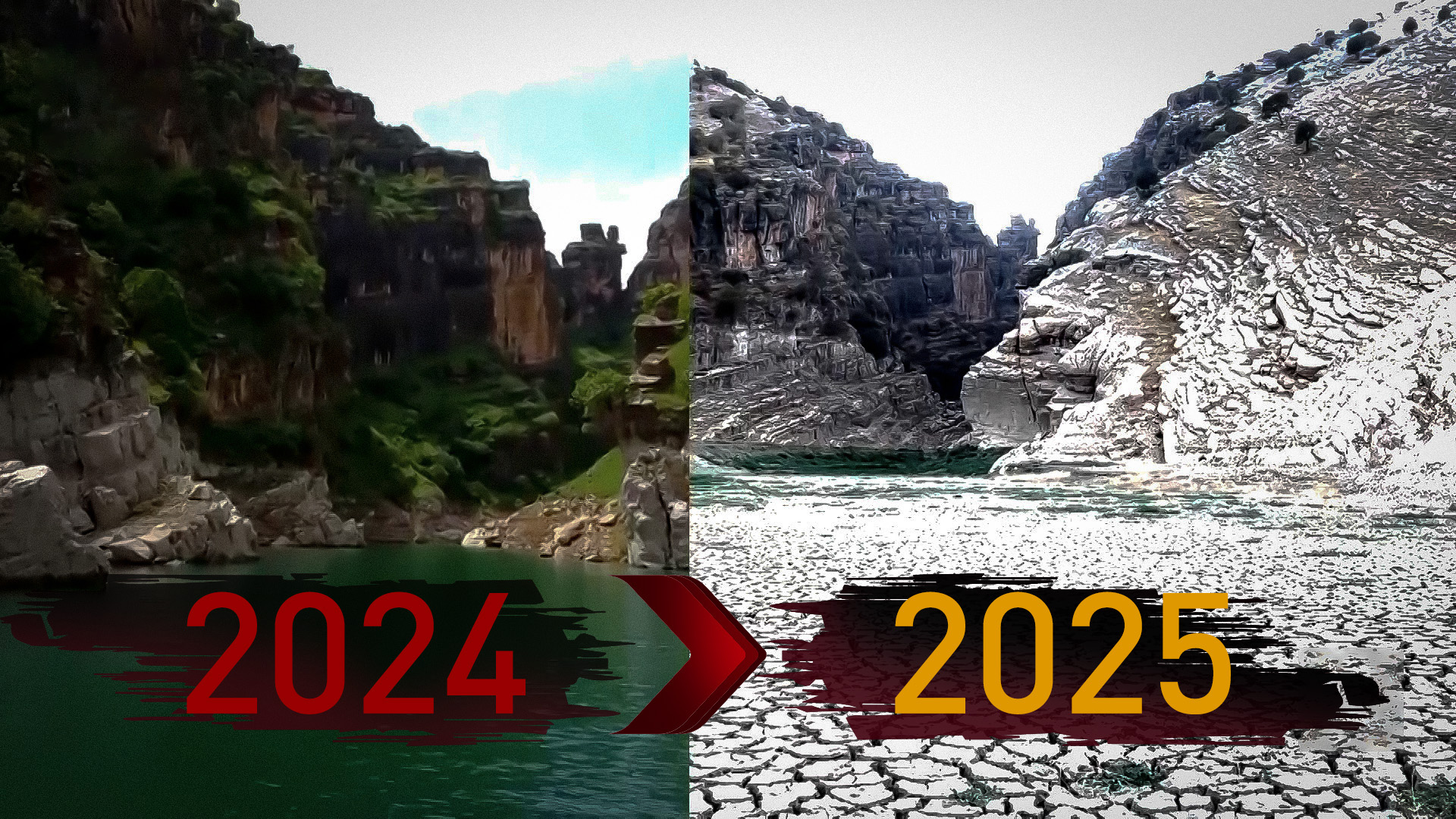Climate Change Threatens Sulaimani’s Water Sources and Tourism
In the past year alone, the water levels have dropped by 18 meters, with the shoreline receding by 200 to 300 meters. Dukan District Governor Sirwan Sarhad confirmed that only 1.4 billion cubic meters of water remain.

ERBIL (Kurdistan24) – Climate change and reduced rainfall have drastically lowered water levels in Sulaimani’s main water sources, particularly at the Sarchnar resort and Dukan Dam, raising alarm over the region’s drinking water supply, agriculture, and tourism sector.
Sarchnar: From Natural Haven to Water Scarcity
Once one of the most celebrated tourist destinations in the Kurdistan Region, Sarchnar is now struggling with severe water shortages. For decades, its fresh water flowing from the surrounding hills sustained Sulaimani’s residents. The Sarcaiar Water Project, launched in the 1950s as the city’s primary water supply, today provides only about 30 percent of the city’s needs.
Photographer Naseh Ali Khayat, who has documented Sarchnar for years, said the transformation has been stark, with the area’s natural beauty and landscape visibly deteriorating.
Dukan Dam: The Largest Reservoir Under Pressure
Dukan Dam, built between 1954 and 1959, remains the largest dam in the Kurdistan Region, serving both as a vital water reservoir and a source of hydroelectric power. With a full capacity of seven billion cubic meters, it is now more than three-quarters empty.
In the past year alone, the water levels have dropped by 18 meters, with the shoreline receding by 200 to 300 meters. Dukan District Governor Sirwan Sarhad confirmed that only 1.4 billion cubic meters of water remain.
The nearby Bestoon Strait, once a vibrant tourist attraction, has dried up, turning into barren land as floods and drought take their toll, further devastating the local tourism economy.
A Growing Crisis
The depletion of these key water sources has far-reaching consequences, threatening both water and food security across the region. Experts warn that without urgent action—including new water management strategies, construction of additional dams, and rehabilitation of existing infrastructure—the crisis could deepen in the coming years.
